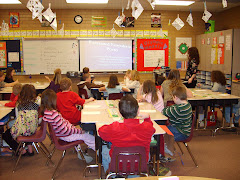My personal learning theory takes into consideration all the theories that were discussed in this class. I like some aspects of certain theories better than others, and so I have taken pieces of different theories and tried to work them together in my mind. My experiences I have had during practicum have also influenced my own learning theory.
To begin explaining my personal learning theory, I would like to start with Vygotsky. I have seen how real the zone of proximal development is as I was teaching and how when teachers teach in this zone, student understanding is greatly increased. This idea is supported by the phrase: “what I can do with help today I can do by myself tomorrow.” How do the students reach a position where they can work independently? Through scaffolding that the teacher sets up so that the student is more supported in the learning in the beginning and as the learning continues, the responsibility is transferred more and more to the student. This set up of responsibility is known as assisted learning. These ideas of Vygotsky are part of my learning theory.
As I was reviewing social cognitive theories, I wanted to include some of those ideas into my own theory. For example, I believe that self-efficacy plays an important role in student learning; if students believe they are capable of learning, then they are more likely to do better. Similarly, the teacher’s sense of self-efficacy is a critical part of student learning. This is one of the few characteristics that teachers have control over that is correlated with how students perform in the classroom. I noticed that as I was more confident as a teacher during practicum, the students became more responsive. Also, modeling is an important concept from the observational learning theory that I strongly support. It is extremely helpful for students to have someone model the behavior that is expected of them. When I used this principle when I was teaching, it definitely helped solidify the expectations for whatever activity we were doing. Another aspect of this model that I include in my theory is self-regulation. This is when students learn to control their own behavior. It is an important skill for students to learn. As I taught, I would have the students check their voice levels and check themselves to see if they were on task. This helped prompt the students to evaluate their own behavior.
Looking at the cognitive approach and how the memory works helped shape my theory also. In particular, it is important to use priming when beginning a lesson. Activating background knowledge helps when teaching a new concept or even when continuing an ongoing unit. It adds flow to the lesson and the students are able to focus better. Another important principle is elaboration. Connecting new information to existing knowledge is a way for students to make sense of new information and allows them to figure out how it fits in with what they already know. It is a good way for them to contextualize what they are learning. Organization also helps students’ learning. When material is organized, students will understand it better and will be more likely to remember it in the future.
The ideas from the course on social processes also influence my personal theory. For example, collaboration is important in any learning environment; it is necessary to respect others’ differences and build on the knowledge that other people have. Similarly, cooperation in the classroom is also essential. Learning how to work together for a common goal will help students throughout their lives. By engaging in cooperative learning, students can work in small groups which help each other learn. This is the kind of learning I want to have in my classroom.
Another important part of my learning theory depends on the student’s locus of causality. When a student is intrinsically motivated, I have found that they focus better on learning activities and strive to think and learn about the subject. However, when students are extrinsically motivated, they are easily distracted and become off task. If teachers can try to harness the intrinsic motivation, it will encourage lifelong learning because learning is its own reward.
These ideas from this course have helped shape my own personal learning theory. I believe that these ideas coexist and that the various theories help explain each other. Learning is a complex process and I do not believe that one theory explains all aspects of learning, which is why I chose to work from a combination of the theories.

It's interesting that theories are often pitted against one another when, in reality, they coexist (as you pointed out). For example, people usually put behaviorism and social constructivism on two ends of a spectrum, but the first time I observed my sons' Spanish class I saw both theories working together in a very powerful learning experience. I'm glad that you're able to understand which parts of which theories help you teach more effectively and that you develop the conditional knowledge to apply it all. Great insight!
ReplyDelete